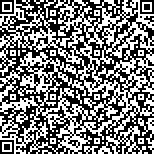| Quote
: |
胡婉玲,谢冰,谭洁.电针透刺联合Mulligan动态关节松动术治疗轻中度膝骨关节炎的随机对照研究[J].湖南中医药大学学报英文版,2023,43(8):1486-1491.[Click to copy
] |
|
| |
|
|
| This paper
:Browser 1131times Download 583times |
| 电针透刺联合Mulligan动态关节松动术治疗轻中度膝骨关节炎的随机对照研究 |
| 胡婉玲,谢冰,谭洁 |
| (湖南中医药大学, 湖南 长沙 410208;长沙市中心医院, 湖南 长沙 410004;长沙市第一医院, 湖南 长沙 410005) |
| 摘要: |
| 目的 观察电针透刺和Mulligan动态关节松动术治疗轻中度膝骨关节炎(knee osteoarthfitis,KOA)的临床疗效,探寻安全有效的中西医结合治疗方案。方法 将90例来自长沙市中心医院的轻中度KOA患者随机分为电针透刺组、关节松动组和联合组,每组30例。电针透刺组即在透刺基础上连接电针仪,关节松动组采用Mulligan动态关节松动术治疗,联合组即电针透刺结合Mulligan动态关节松动术。各组均每天治疗1次,每周治疗5次,共治疗6周。在治疗前及治疗6周后,通过疼痛视觉模拟评分(visual analogue scale,VAS)、西安大略和麦克马斯特大学骨关节炎指数(Western Ontario and McMaster Universities arthritis index,WOMAC)、Lysholm膝关节功能评估量表、膝关节最大主动关节活动度(active range of motion,AROM)、髌上囊积液及关节间隙角等指标综合评定疗效。结果 治疗后,3组患者的VAS、WOMAC评分较治疗前均有下降,Lysholm评分、AROM较治疗前均有提高,关节间隙角较治疗前减小,髌上囊积液量较治疗前减少(P<0.05);联合组的上述指标较电针透刺组、关节松动组改善更明显(P<0.05);电针透刺组在减少髌上囊积液方面优于关节松动组(P<0.05);关节松动组在增加膝关节AROM、缩小关节间隙角方面优于电针透刺组(P<0.05)。结论 电针透刺及Mulligan动态关节松动术均能不同程度缓解轻中度KOA患者疼痛症状,降低髌上囊积液量,缩小关节间隙角,改善膝关节整体功能,且二者联合疗效更佳。 |
| 关键词: 膝骨关节炎 电针透刺 Mulligan动态关节松动术 膝关节功能 关节活动度 髌上囊积液 关节间隙角 |
| DOI:10.3969/j.issn.1674-070X.2023.08.022 |
| Received:May 02, 2023 |
| 基金项目:湖南省卫生健康委员会科研课题(D202319016981)。 |
|
| Combination therapy of electroacupuncture with acupoint-to-acupoint penetration needling and Mulligan mobilization with movement for mild-to-moderate knee osteoarthritis: A randomized controlled study |
| HU Wanling,XIE Bing,TAN Jie |
| (Hunan University of Chinese Medicine, Changsha, Hunan 410208, China;Changsha Central Hospital, Changsha, Hunan 410004, China;The First Hospital of Changsha, Changsha, Hunan 410005, China) |
| Abstract: |
| Objective To observe the clinical efficacy of electroacupuncture with acupoint-to-acupoint penetration needling (EAAAPN) and Mulligan mobilization with movement (MWM) on mild-to-moderate knee osteoarthfitis (KOA), so as to explore the safe and effective regimens of integrated Chinese and western medicine. Methods A total of 90 patients with mild-to-moderate KOA from Changsha Central Hospital were randomly divided into EAAAPN group (n=30), MWM group (n=30), and combination group (n=30). EAAAPN group was treated with acupoint-to-acupoint penetration needling and then an electric acupuncture apparatus was connected to the needles, MWM group was treated with Mulligan MWM, and the combination group was given both therapies above. Each group was treated once a day, 5 times a week, for a total of 6 weeks. Before treatment and after 6 weeks of treatment, the curative efficacy was comprehensively evaluated by indicators such as visual analogue scale (VAS), Western Ontario and McMaster Universities arthritis index (WOMAC), Lysholm knee scoring scale, maximum active range of motion (AROM), suprapatellar bursa effusion, and joint space angle. Results After treatment, VAS and WOMAC scores in 3 groups were lower than those before treatment, while Lysholm and AROM scores were higher than those before treatment. Meanwhile, the joint space angle was narrower than that before treatment, and the amount of suprapatellar bursa effusion decreased compared with that before treatment (P<0.05). Moreover, the above indexes in the combination group were more significantly improved than those in EAAAPN group and MWM group (P<0.05). EAAAPN group was superior to MWM group in reducing suprapatellar bursa effusion, while MWM group overmatched EAAAPN group in increasing AROM and reducing joint space angle (P<0.05). Conclusion Both EAAAPN and Mulligan MWM can relieve pain symptoms in patients with mild-to-moderate KOA to varying degrees, through reducing the amount of suprapatellar bursa effusion, narrowing the joint space angle, and improving the overall function of knee joint. Furthermore, the combination of the two therapies can achieve better effects. |
| Key words: knee osteoarthritis electroacupuncture with acupoint-to-acupoint penetration needling Mulligan mobilization with movement knee joint function active range of motion suprapatellar bursa effusion joint space angle |
|

二维码(扫一下试试看!) |
|
|
|
|


